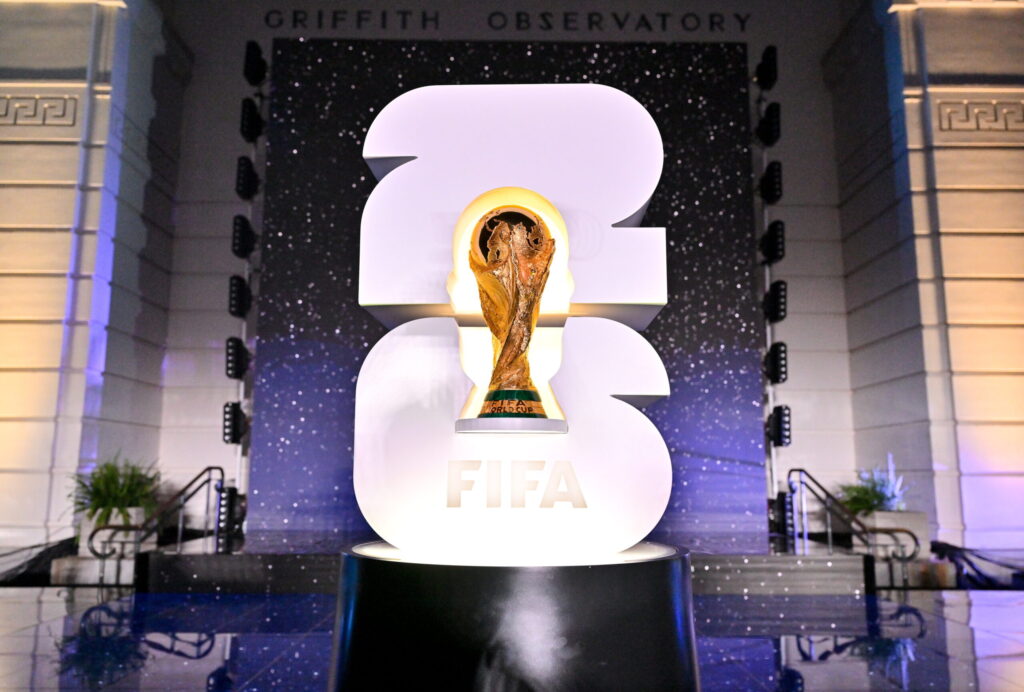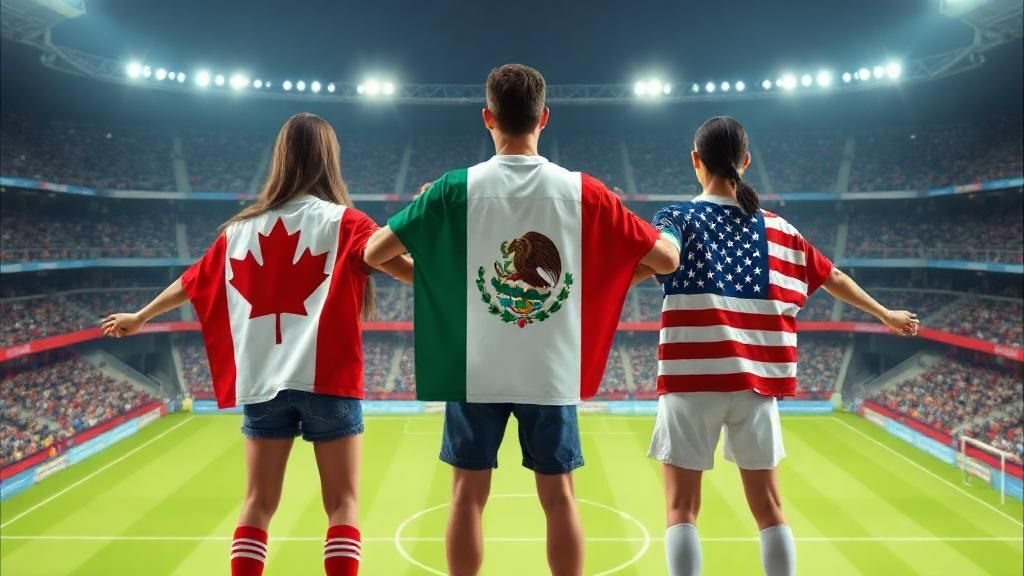One Year to Go: The World Cup’s Grand Return to North America
As the clock ticks down, a palpable excitement builds across North America. Exactly one year from now, the greatest spectacle in football, the FIFA World Cup, will kick off its 23rd edition, marking a historic return to the continent. For the first time ever, three nations—the United States, Canada, and Mexico—will co-host this monumental event, promising a tournament of unprecedented scale and passion. This upcoming World Cup isn’t just another competition; it’s a celebration of football’s enduring legacy, a testament to its global appeal, and a look forward to a future where the beautiful game continues to unite the world.
The FIFA World Cup has always been more than just a series of matches; it’s a cultural phenomenon, a quadrennial gathering that transcends borders and languages. From its humble beginnings in 1930 to the global powerhouse it is today, the tournament has woven a rich tapestry of unforgettable moments, legendary players, and emotional victories. Each edition adds new chapters to this grand narrative, and 2026 is poised to be one of the most significant yet, not only for its expanded format but also for its symbolic return to a region that has embraced football with growing fervor.

This article will take you on a journey through the illustrious history of the FIFA World Cup, highlighting its evolution and the moments that have defined it. We will then shift our focus to the highly anticipated 2026 edition, exploring the host cities, the meticulous preparations underway, and what we know so far about this groundbreaking tournament. Join us as we celebrate the countdown to a World Cup that promises to be bigger, bolder, and more inclusive than ever before.
A Storied Past: The Evolution of the FIFA World Cup
The idea of a global football tournament had been a dream for many years, but it wasn’t until 1930 that this dream became a reality. The inaugural FIFA World Cup was held in Uruguay, a fitting choice given their centenary of independence and their status as reigning Olympic football champions. Thirteen nations participated in that first tournament, with Uruguay triumphing over Argentina in the final, etching their name into history as the first World Cup champions.
Since then, with the exceptions of 1942 and 1946 due to the Second World War, the World Cup has been held every four years, growing in stature and global appeal with each passing edition. Early tournaments were dominated by European and South American powerhouses, with nations like Italy, Brazil, and Germany establishing themselves as perennial contenders. The tournament expanded over the decades, both in terms of participating teams and its reach, becoming a truly global event that captures the attention of billions.
The World Cup’s Milestones
Key milestones in the World Cup’s history include the introduction of the Jules Rimet Trophy, the iconic golden statue that symbolized footballing supremacy until its permanent award to Brazil in 1970. The tournament has witnessed countless memorable moments: Pelé’s emergence as a global superstar, Maradona’s ‘Hand of God’ and his dazzling solo goal, Zidane’s masterclass in 1998, and the dramatic penalty shootouts that have decided so many fates. Each World Cup has its own unique narrative, shaped by the triumphs and heartbreaks of its participants.
The tournament has also been a platform for innovation and change within the sport. From tactical evolutions to technological advancements like goal-line technology and VAR, the World Cup has often been at the forefront of football’s development. It has also adapted to changing global dynamics, with an increasing number of nations from Africa, Asia, and North America making their mark on the world stage, demonstrating the sport’s ever-expanding reach and diversity.
As we look back at the rich history of the FIFA World Cup, it’s clear that its enduring appeal lies not just in the quality of football, but in its ability to bring people together, to inspire national pride, and to create shared memories that last a lifetime. The anticipation for each new tournament is a testament to its power, and the 2026 edition, with its unique multi-nation hosting, promises to add another compelling chapter to this already legendary story.
The Road to 2026: A New Era for the World Cup
The FIFA World Cup 2026 is set to be a landmark event in the history of the tournament. For the first time, the competition will be co-hosted by three nations: the United States, Canada, and Mexico. This expanded format will also see an increase in the number of participating teams from 32 to 48, leading to a record 104 matches played across 16 host cities. This expansion aims to make the World Cup more inclusive, providing more opportunities for nations to compete on the global stage and for fans around the world to experience the excitement firsthand.
Host Cities: A Continental Celebration
The 16 host cities for the 2026 World Cup span across the vast North American continent, from the Pacific to the Atlantic, and from the northern reaches of Canada to the southern tip of Mexico. Each city brings its unique flavor and passion for football, promising a diverse and vibrant atmosphere for fans and teams alike. The distribution of matches will see the majority played in the United States, with Canada and Mexico also hosting a significant number of games.

United States Host Cities:
- Atlanta
- Boston
- Dallas
- Houston
- Kansas City
- Los Angeles
- Miami
- New York/New Jersey
- Philadelphia
- San Francisco (Bay Area)
- Seattle
Canadian Host Cities:
- Toronto
- Vancouver
Mexican Host Cities:
- Guadalajara
- Mexico City
- Monterrey
These cities are not just venues; they are vibrant hubs preparing to welcome the world. From iconic stadiums to bustling fan zones, each location is gearing up to provide an unforgettable experience. The selection of these cities was a meticulous process, considering infrastructure, fan accommodation, transportation, and the overall enthusiasm for football within each region. The goal is to create a seamless and festive environment that showcases the best of North American hospitality and passion for the sport.
Preparations Underway: Building for a Global Spectacle
With exactly one year to go, preparations for the 2026 FIFA World Cup are in full swing across all three host nations. The scale of this tournament, with its expanded format and multiple host countries, presents unique logistical and organizational challenges. However, the organizing committees, in collaboration with FIFA, are working tirelessly to ensure every aspect of the event is meticulously planned and executed.
Infrastructure upgrades are a significant part of the preparation. Many stadiums are undergoing renovations to meet FIFA’s stringent requirements, including improvements to playing surfaces, spectator facilities, and media infrastructure. Beyond the stadiums, cities are focusing on enhancing transportation networks, accommodation options, and security measures to handle the massive influx of fans, teams, and media personnel.
Security is a paramount concern for an event of this magnitude. Comprehensive security plans are being developed and refined, involving collaboration between local, national, and international agencies. The aim is to ensure the safety and well-being of everyone involved, from players and officials to fans and residents. Designated Fan Zones will also have robust security protocols to provide safe and enjoyable gathering places for supporters.
Logistics for team travel and training facilities are also being finalized. With teams potentially moving between three different countries, efficient travel arrangements and world-class training venues are crucial. The organizing committees are working to minimize travel burdens on teams and ensure they have optimal conditions for preparation and performance.
Beyond the physical infrastructure, there’s a strong emphasis on community engagement and legacy planning. The host nations are looking beyond the tournament itself, aiming to leverage the World Cup to promote football at grassroots levels, inspire future generations of players, and leave a lasting positive impact on the communities involved. This includes initiatives to encourage participation in sports, develop youth programs, and foster a love for the game that extends far beyond 2026.
What We Know So Far: Key Details and Anticipation
The 2026 FIFA World Cup will feature a new format with 48 teams divided into 12 groups of four. The top two teams from each group, along with the eight best third-placed teams, will advance to a new Round of 32. This expanded knockout stage promises even more thrilling matches and opportunities for underdog stories. The final match is expected to be held in the United States, though the specific venue has yet to be officially announced.
The qualification process for the 2026 World Cup is already underway in various confederations, with teams battling for their spot in this historic tournament. As co-hosts, the United States, Canada, and Mexico automatically qualify, giving them ample time to prepare and build competitive squads.
The anticipation for the 2026 World Cup is immense. It represents a unique opportunity for North America to showcase its passion for football on a global stage, to welcome fans from every corner of the world, and to deliver a tournament that will be remembered for generations. With one year to go, the excitement is building, and the world is eagerly awaiting the kick-off of what promises to be an extraordinary celebration of the beautiful game.
Conclusion: The Countdown Continues
As we stand exactly one year away from the opening whistle of the FIFA World Cup 2026, the excitement is palpable. This tournament, set to unfold across the vibrant landscapes of the United States, Canada, and Mexico, promises to be a celebration of football on an unprecedented scale. From the rich history of the World Cup, which has captivated generations, to the meticulous preparations underway in each host city, every element points towards a truly unforgettable event.
The expansion to 48 teams and the unique multi-nation hosting model underscore FIFA’s commitment to making football a truly global sport, accessible and inspiring to more nations and fans than ever before. The legacy of this World Cup will extend far beyond the final match, fostering a deeper love for the game and leaving a lasting positive impact on communities across North America.
So, let the countdown continue! The journey to 2026 is not just about the matches; it’s about the anticipation, the shared dreams, and the collective spirit that only the World Cup can ignite. Get ready for a spectacle of skill, passion, and unity, as the world comes together to celebrate the beautiful game.

